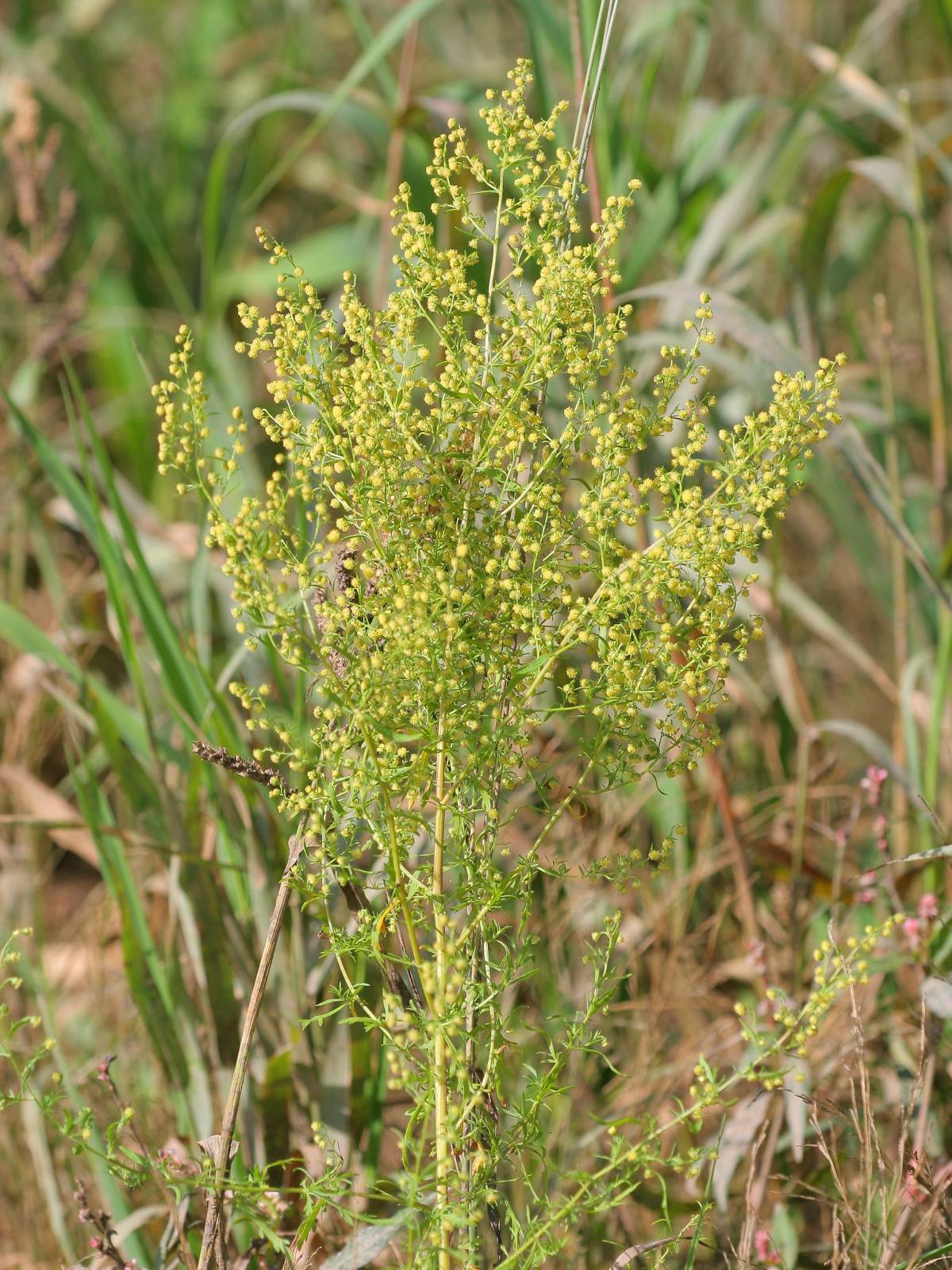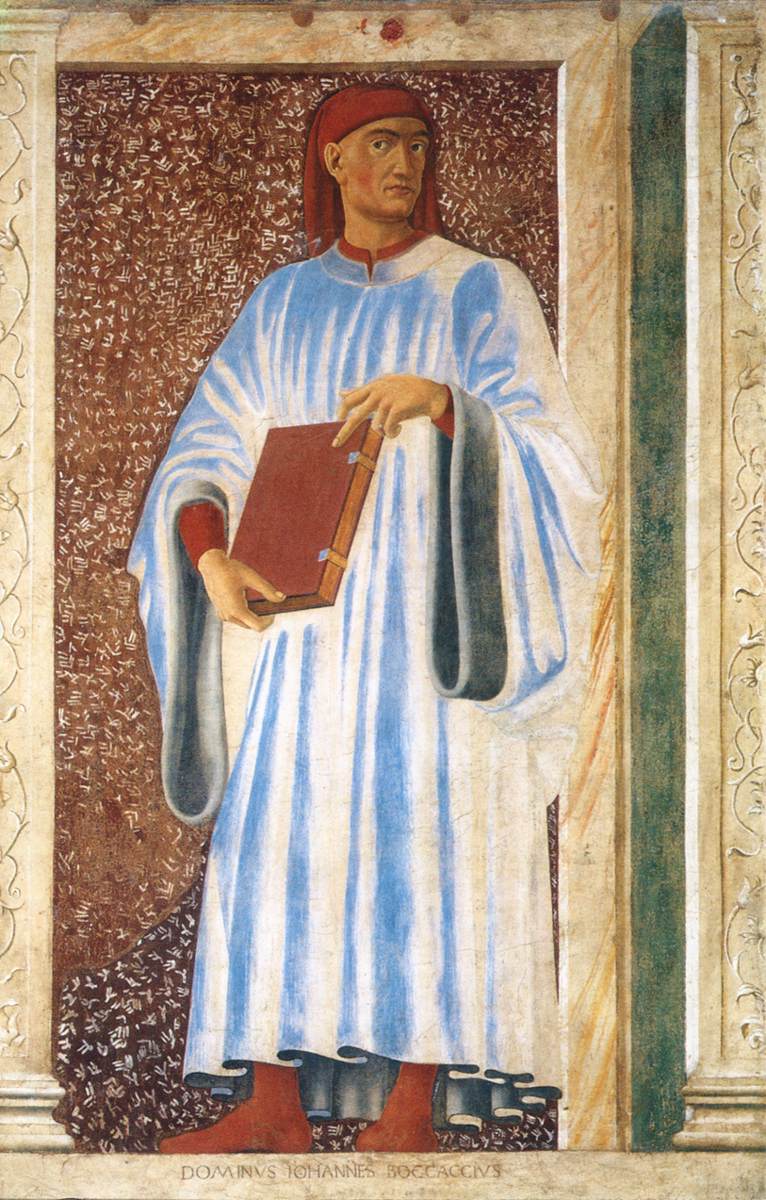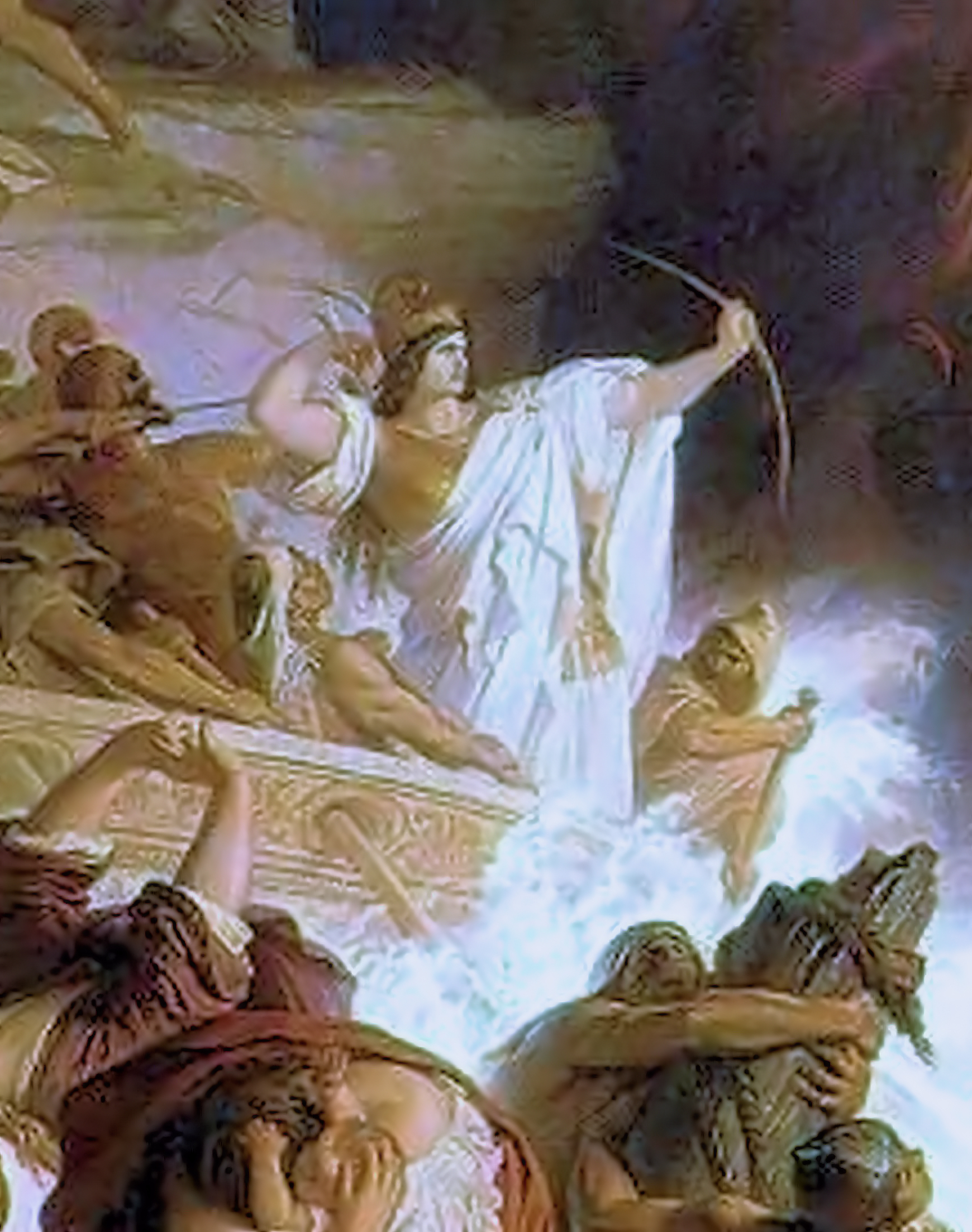|
Artemisia II Of Caria
Artemisia II of Caria ( Greek: Ἀρτεμισία; died 351 BC) was a naval strategist, commander and the sister (and later spouse) and the successor of Mausolus, ruler of Caria. Mausolus was a satrap of the Achaemenid Empire, yet enjoyed the status of king or dynast of the Hecatomnid dynasty. After the death of her brother/husband, Artemisia reigned for two years, from 353 to 351 BCE. Her ascension to the throne prompted a revolt in some of the island and coastal cities under her command due to their objection to a female ruler. Her administration was conducted on the same principles as that of her husband; in particular, she supported the oligarchical party on the island of Rhodes. Because of Artemisia's grief for her brother-husband, and the extravagant and bizarre forms it took, she became to later ages "a lasting example of chaste widowhood and of the purest and rarest kind of love", in the words of Giovanni Boccaccio. In art, she was usually shown in the process ... [...More Info...] [...Related Items...] OR: [Wikipedia] [Google] [Baidu] |
Mausoleum At Halicarnassus
The Mausoleum at Halicarnassus or Tomb of Mausolus (; ) was a tomb built between 353 and 351 BC in Halicarnassus (present Bodrum, Turkey) for Mausolus, an Anatolian from Caria and a satrap in the Achaemenid Persian Empire, and his sister-wife Artemisia II of Caria. The structure was designed by the Greek architects Satyros and Pythius of Priene. Its elevated tomb structure is derived from the tombs of neighbouring Lycia, a territory Mausolus had invaded and annexed , such as the Nereid Monument. The Mausoleum was approximately in height, and the four sides were adorned with sculptural reliefs, each created by one of four Greek sculptors: Leochares, Bryaxis, Scopas of Paros, and Timotheus. The Mausoleum contained 400 freestanding sculptures. The mausoleum was considered to be such an aesthetic triumph that Antipater of Sidon identified it as one of his Seven Wonders of the Ancient World. It was destroyed by successive earthquakes from the 12th to the 15th century; it w ... [...More Info...] [...Related Items...] OR: [Wikipedia] [Google] [Baidu] |
Giovanni Boccaccio
Giovanni Boccaccio ( , ; ; 16 June 1313 – 21 December 1375) was an Italian people, Italian writer, poet, correspondent of Petrarch, and an important Renaissance humanism, Renaissance humanist. Born in the town of Certaldo, he became so well known as a writer that he was sometimes simply known as "the Certaldese" and one of the most important figures in the European literary panorama of the 14th century, fourteenth century. Some scholars (including Vittore Branca) define him as the greatest European prose writer of his time, a versatile writer who amalgamated different literary trends and genres, making them converge in original works, thanks to a creative activity exercised under the banner of experimentalism. His most notable works are ''The Decameron'', a collection of short stories, and ''De Mulieribus Claris, On Famous Women''. ''The Decameron'' became a determining element for the Italian literary tradition, especially after Pietro Bembo elevated the Boccaccian styl ... [...More Info...] [...Related Items...] OR: [Wikipedia] [Google] [Baidu] |
Cybele
Cybele ( ; Phrygian: ''Matar Kubileya, Kubeleya'' "Kubeleya Mother", perhaps "Mountain Mother"; Lydian: ''Kuvava''; ''Kybélē'', ''Kybēbē'', ''Kybelis'') is an Anatolian mother goddess; she may have a possible forerunner in the earliest neolithic at Çatalhöyük. She is Phrygia's only known goddess, and likely, its national deity. Greek colonists in Asia Minor adopted and adapted her Phrygian cult and spread it to mainland Greece and to the more distant western Greek colonies around the sixth century BC. In Greece, Cybele met with a mixed reception. She became partially assimilated to aspects of the Earth-goddess Gaia, of her possibly Minoan equivalent Rhea, and of the harvest–mother goddess Demeter. Some city-states, notably Athens, evoked her as a protector, but her most celebrated Greek rites and processions show her as an essentially foreign, exotic mystery-goddess who arrives in a lion-drawn chariot to the accompaniment of wild music, wine, and a disorderl ... [...More Info...] [...Related Items...] OR: [Wikipedia] [Google] [Baidu] |
Sacred Grove
Sacred groves, sacred woods, or sacred forests are groves of trees that have special religious importance within a particular culture. Sacred groves feature in various cultures throughout the world. These are forest areas that are, for the most part, untouched by local people and often protected by local communities. They often play a critical role in protecting water sources and biodiversity, including essential resources for the groups that protect them. They were important features of the mythological landscape and cult practice of Celtic, Estonian, Baltic, Germanic, ancient Greek, Near Eastern, Roman, and Slavic polytheism. They are also found in locations such as India (Maharashtra, Karnataka, Kerala, and Tamil Nadu), Japan ( sacred shrine forests), China ( Fengshui woodland), West Africa and Ethiopia ( church forests). Examples of sacred groves include the Greco-Roman '' temenos'', various Germanic words for sacred groves, and the Celtic '' nemeton'', which was la ... [...More Info...] [...Related Items...] OR: [Wikipedia] [Google] [Baidu] |
Artemisia I Of Caria
Artemisia I of Caria (, ; Floruit, fl. 480 BC) was a queen of the ancient Greek city-state of Halicarnassus, which is now in Bodrum, present-day Turkey. She was also queen of the nearby islands of Kos, Nisyros and Kalymnos,Enc. Britannica, "Artemisia I" within the Achaemenid dynasty, Achaemenid satrapy of Caria, in about 480 BC. She was of Carians, Carian-Greek ethnicity by her father Lygdamis I, and half-Crete, Cretan by her mother. She fought as an ally of Xerxes I, Xerxes I, King of Persia against the independent Ancient Greece, Greek city states during the second Persian invasion of Greece. She personally commanded ships at the naval battle of Artemisium and at the naval Battle of Salamis in 480 BC. She is mostly known through the writings of Herodotus of Halicarnassus, Herodotus, himself a native of Halicarnassus, who praises her courage and relates the respect in which she was held by Xerxes. Family Artemisia's father was the satrap of Halicarnassus, Lygdamis of Halicar ... [...More Info...] [...Related Items...] OR: [Wikipedia] [Google] [Baidu] |
Polyaenus
Polyaenus or Polyenus ( ; see ae (æ) vs. e; , "much-praised") was a 2nd-century Roman Macedonian author and rhetorician, known best for his ''Stratagems in War'' (), which has been preserved. He was born in Bithynia, Asia Minor. The ''Suda'' calls him a rhetorician, and Polyaenus himself writes that he was accustomed to plead causes before the Roman emperor. Polyaenus dedicated ''Stratagems in War'' to the two emperors Marcus Aurelius () and Lucius Verus (), while they were engaged in the Roman–Parthian War of 161–166, about 163, at which time he was too old to accompany them in their campaigns. Stratagems This work is divided into eight books: the first six contain accounts of the stratagems of the most celebrated Greek generals and rulers, the seventh book contains stratagems of non Greeks and Romans, and the eighth book those of the Romans and of illustrious women. Parts, however, of the sixth and seventh books are lost, so that of the 900 stratagems which Polyaenus de ... [...More Info...] [...Related Items...] OR: [Wikipedia] [Google] [Baidu] |
Mausoleum
A mausoleum is an external free-standing building constructed as a monument enclosing the burial chamber of a deceased person or people. A mausoleum without the person's remains is called a cenotaph. A mausoleum may be considered a type of tomb, or the tomb may be considered to be within the mausoleum. Overview The word ''mausoleum'' (from the ) derives from the Mausoleum at Halicarnassus (near modern-day Bodrum in Turkey), the grave of King Mausolus, the Persian satrap of Caria, whose large tomb was one of the Seven Wonders of the Ancient World. Mausolea were historically, and still may be, large and impressive constructions for a deceased leader or other person of importance. However, smaller mausolea soon became popular with the gentry and nobility in many countries. In the Roman Empire, these were often in necropoles or along roadsides: the via Appia Antica retains the ruins of many private mausolea for kilometres outside Rome. When Christianity became domin ... [...More Info...] [...Related Items...] OR: [Wikipedia] [Google] [Baidu] |
Seven Wonders Of The Ancient World
The Seven Wonders of the Ancient World, also known as the Seven Wonders of the World or simply the Seven Wonders, is a list of seven notable structures present during classical antiquity, first established in the 1572 publication '' Octo Mundi Miracula'' using a combination of historical sources.: "It is perhaps only with the execution of these drawings that the list became fixed for all time , but the details of each monument have been scrutinised ever since under the scientific eye of such scholars as Johann Fischer von Erlach.": "The 'canonical' list of the Seven Wonders that we use today was actually drawn up in the sixteenth century by Dutch artist Maarten van Heemskerck, who produced a set of drawings of the Seven Wonders compiled from his perusal of ancient authors. His list contained two statues, the Zeus from Olympia and the Colossus of Rhodes; two sets of tombs, the Pyramids of Egypt and the Mausoleum of Halicarnassus; and several buildings, the Temple of Artemis at Ephe ... [...More Info...] [...Related Items...] OR: [Wikipedia] [Google] [Baidu] |
Antipater Of Sidon
Antipater of Sidon (Greek: Ἀντίπατρος ὁ Σιδώνιος, ''Antipatros ho Sidonios'') was an ancient Greek poet of the 2nd and 1st centuries BCE. Cicero mentions him living in Rome during the time of Quintus Lutatius Catulus, and calls him a brilliant epigrammist, sometimes too fond of imitation. His poems, about 75 of which are preserved in the ''Greek Anthology'', are mostly epitaphs and ecphrastic poems. 96 poems in the ''Greek Anthology'' are attributed simply to "Antipater", without an indication of whether they are by Antipater of Sidon or the later Antipater of Thessalonica, and it is difficult to identify which are his. One of his poems gives one of the earliest known lists of the Seven Wonders of the Ancient World. I have set eyes on the wall of lofty Babylon on which is a road for chariots, and the statue of Zeus by the Alpheus, and the hanging gardens, and the Colossus of the Sun, and the huge labour of the high pyramids A pyramid () is a Nonb ... [...More Info...] [...Related Items...] OR: [Wikipedia] [Google] [Baidu] |
Halicarnassus
Halicarnassus ( ; Latin: ''Halicarnassus'' or ''Halicarnāsus''; ''Halikarnāssós''; ; Carian language, Carian: 𐊠𐊣𐊫𐊰 𐊴𐊠𐊥𐊵𐊫𐊰 ''alos k̂arnos'') was an ancient Greece, ancient Greek city in Caria, in Anatolia.Livius.org Halicarnassus/Bodrum "Usually, Greek settlers first occupied an island near a native settlement; later, they settled on the mainland. We may assume that the first Greeks built their houses on the island that was later known as the Royal Island. Today, it is no longer an island, but an impressive castle built in the age of the Crusades. The native settlement probably was at the Salmacis hill, which was crowned by a sanctuary of Hermaphroditus.", "Later, the Greeks settled on the mainland. To the northeast of the island, they founded a marketplace to t ... [...More Info...] [...Related Items...] OR: [Wikipedia] [Google] [Baidu] |
Rhetorician
Rhetoric is the art of persuasion. It is one of the three ancient arts of discourse (trivium) along with grammar and logic/dialectic. As an academic discipline within the humanities, rhetoric aims to study the techniques that speakers or writers use to inform, persuade, and motivate their audiences. Rhetoric also provides heuristics for understanding, discovering, and developing arguments for particular situations. Aristotle defined rhetoric as "the faculty of observing in any given case the available means of persuasion", and since mastery of the art was necessary for victory in a case at law, for passage of proposals in the assembly, or for fame as a speaker in civic ceremonies, he called it "a combination of the science of logic and of the ethical branch of politics". Aristotle also identified three persuasive audience appeals: logos, pathos, and ethos. The five canons of rhetoric, or phases of developing a persuasive speech, were first codified in classical Rome: invention, ... [...More Info...] [...Related Items...] OR: [Wikipedia] [Google] [Baidu] |









